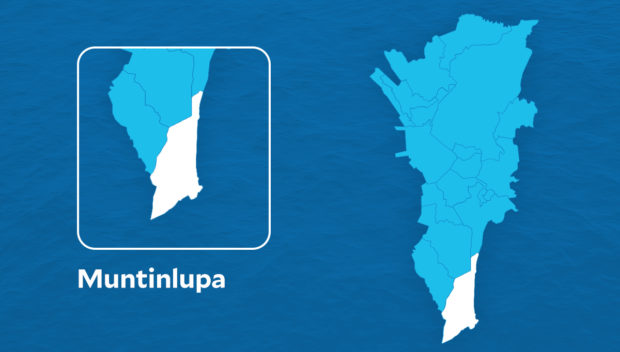Due to heat, Muntinlupa back to blended learning for a month
MANILA, Philippines — All public elementary and high schools in Muntinlupa City will shift to blended learning amid the worsening heat this dry season, the city government said on Saturday.
This makes Muntinlupa the first local government in the National Capital Region to adjust classes in the city to the hot weather, after the country’s heat index has surpassed 40ºC since March, according to the state weather bureau Philippine Atmospheric, Geophysical and Astronomical Services Administration (Pagasa).
From May 2 to June 2, the city’s 28 primary and secondary schools will implement “a combination of face-to-face and asynchronous modalities,” the city government said, explaining that under the latter setup, teachers may post lessons online without having to virtually conduct classes.
This monthlong implementation of blended learning is intended to “protect students, teachers, as well as parents and guardians facing health risks due to an ongoing heat wave,” the city government said in a statement.
It also quoted Mayor Ruffy Biazon as saying that “the safety of our students and school personnel is a priority of the city government. We remind everyone to take the necessary precautions to avoid illnesses brought about by the prevailing hot weather conditions.”
Article continues after this advertisementDepEd orders
The Local Schools Division Office of Muntinlupa has advised parents and guardians to get in touch with school officials or their children’s teachers for more information on class schedules and other related details.
Article continues after this advertisementThe Department of Education (DepEd) said last week that schools could cancel or postpone in-person classes, as it cited rising temperatures in the country which could affect the health of students and school personnel.
Last year, DepEd had already issued Department Order No. 37, which provides for the implementation of modular distance learning in the event of canceled or suspended classes due to natural disasters, calamities, and human-induced hazards.
The department also released an unnumbered memorandum on April 20, acknowledging the authority of school heads to suspend in-person classes and implement distance learning during unfavorable weather, including extreme heat.
Even before that memorandum, Mayor Dennis Hain of Cabuyao City, Laguna province, suspended classes on March 24, after 83 students in Gulod National High School Extension were hospitalized a day earlier due to heat exhaustion, following fire and earthquake drills in the schools.
Last week the Schools Division Office of Pangasinan II, which covers all 22 municipalities in the province’s fourth, fifth, and sixth legislative districts, reverted to modular distance learning.
“The summer heat has been bringing inconveniences and risks to both the learners and the teachers the past weeks and with the affirmation of the weather bureau that warmer temperatures are expected as the warm and dry season begins, there is a felt need to protect the well-being of the learners and the teachers from the extremely high temperatures,” Lorna Bugayong, superintendent of that office, said in a memorandum posted by the Philippine News Agency.
Warning systems
On Monday the heat index in Pangasinan reached 43 degrees Celsius, well within Pagasa’s “danger category” of 42ºC to 51ºC.
Meanwhile, a lawmaker on Saturday suggested that the local governments coordinate with schools in their areas in drafting and implementing their own heat health warning systems, to serve as a guide for class suspensions when the heat becomes extreme and intolerable.
“The Philippines needs a Heat Health Warning System to help principals decide on class suspensions, like how classes are suspended during Signal No. 3 typhoons,” Barangay Health and Wellness Rep. Angelica Natasha Co said in a statement.
“If the national government is unable to come up with this [system] soon, the local governments should take the initiative,” she added.
Co urged local officials and school superintendents to work with the state weather bureau, local health officers, local and regional hospitals, state universities and colleges, and local environment officers to come up with their own provincial or municipal directives establishing their heat health warning systems and action plans.
Co also recommended the installation of nonmercury-based electronic thermometers on campuses and other key locations.
“Emergency purchases of this equipment and software for them can be purchased using local calamity funds. Knowing how government procurement is time-consuming, private citizens and other donors could donate these nonmercury-based electronic thermometers with electronic monitoring technologies. The private sector can respond faster,” she said.
The lawmaker noted that the World Meteorological Organization had issued guidelines in 2015 on the development of heat health warning systems.
Co said South Africa, Taiwan, Singapore, South Korea, and some European nations already have such systems in place.
“The Philippines does not. It is time that we do,” she said.
